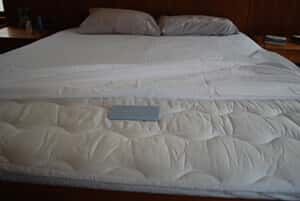
by Derek H. Page
For ten years or so, there have been claims that nocturnal leg cramps can be alleviated by introducing a bar of soap into the bed. The evidence supporting these claims, while voluminous, is almost completely anecdotal. Medical professionals who contribute to this website believe, with a few exceptions, that there is no real effect. The apparently beneficial effects are either a consequence of using unreliable anecdotal evidence or are an example of the placebo effect. That is the stance of mainstream science according to the literature.
It is worthwhile to examine more closely why the medical community reacts in this way. I believe there are two major reasons. One comes from the training that all scientists receive. For many years it has been accepted that in the universe as we currently know it only three forces can act at a distance without the need for an intermediary medium. These forces are gravity, magnetism, and electricity (including electromagnetism). Scientists do not believe in extrasensory perception or telekinesis, because that would require postulating another force for which there is no evidence.
How then can soap at the bottom of the bed affect a cramp in the leg, since clearly none of these three forces are operating? Something must be physically transferred across the space between the soap and the source of pain in the leg. Since this seems improbable, it is concluded that the soap cannot be responsible for the beneficial effect observed. No further work is merited. The placebo effect is credited.
There is a second reason for the failure of the medical community to address this problem. Medical research is performed either in universities or in company laboratories. Universities get their funding from granting agencies. University professors would be loath to appear before a grant committee defending a research proposal to investigate an old wives’ tale. Soap at the bottom of the bed? It sounds like quackery.
On the other hand, pharmaceutical companies would have no interest in assigning the problem to their laboratories. It would be difficult to justify research on such an inexpensive product as soap. The return on investment is unlikely to be high. It seems that the only ones who would be interested in seeing this issue resolved are those presently suffering from nocturnal cramps! And they have no collective voice.
Finally, a word about the discrediting of anecdotal evidence by the medical community: Having worked for nearly a lifetime both in fundamental science and in the practical application of research work, I have to say that anecdotal evidence does not have zero value. Of course, it must be treated with caution and not used irresponsibly, but in my experience it can give useful hints about which avenues might be usefully explored. The very existence of anecdotal evidence is a sign that the field has not been adequately researched.
In conclusion, I want to make it clear that I do not believe that soap in the bed cures cramps. But then, neither do I believe it does not cure cramps. This is not a question of belief. It is a question of doing under controlled conditions the necessary experiments to test the hypothesis. In a previous article, I outlined a proposed experiment that might at least stimulate a professional academic to tackle this question. I am disappointed that a year later no one has reported having done this simple experiment.
I was pleased to read in the March 2014 issue of this website a response by Joe and Terry Graedon on the value of home remedies. The medical community would do well to take note of it.
PEOPLE’S PHARMACY PERSPECTIVE:
We thank Derek Page for his continued interest in this topic. He has an inquisitive mind and would like answers to some of life’s unusual questions. We too would love someone to undertake Derek’s proposed experiment.
In the meantime, we think a bar of soap under the bottom sheet is a low-tech, inexpensive and surprisingly safe strategy for combatting nighttime leg cramps…for some people (not everyone benefits). You can read some fascinating stories at this link.

